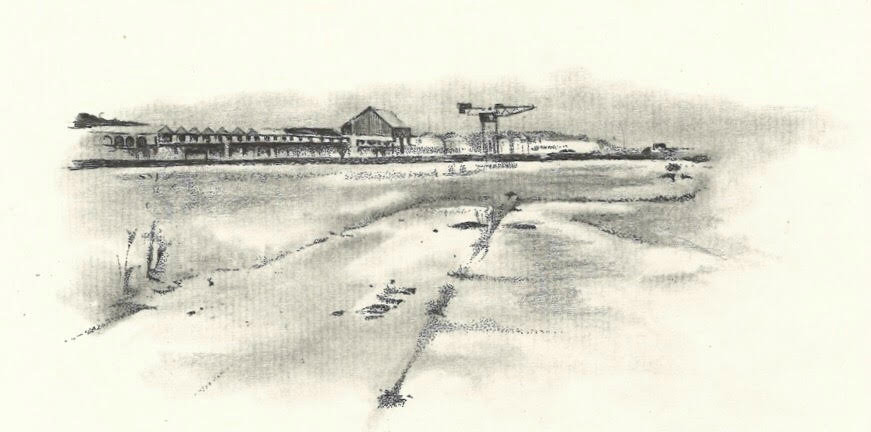City brownfield strategy taking time
Dealing with old industrial sites is important, councillors say
Old industrial sites can be a headache for cities to deal with, but they can also an opportunity for sustainable city growth, two city councillors say.
In 2015, Fort Rouge-East Fort Garry Coun. Jenny Gerbasi and Transcona Coun. Russ Wyatt described the need for a brownfield redevelopment strategy.

Illustration by Gabrielle Funk
Brownfields are commercial and industrial sites that have not been developed due to real or perceived contamination issues. The city’s Our Winnipeg plan, adopted in 2011, defines former industrial areas, often near rail lines, as “major redevelopment sites.” It also describes them as “valuable,” because they are located near or within existing communities.
Gerbasi is now the deputy mayor of Winnipeg and still believes there is a need for a brownfield strategy.
“Brownfield sites are an opportunity that could be used to encourage more development that is sustainable,” says the deputy mayor. She argues this closeness to existing services makes brownfields sustainable ways to grow the city. By contrast, creating new developments, such as housing, on the outskirts of the city often results in a need to build new city infrastructure and services, according to Gerbasi.
The Waverley West underpass is estimated to cost $155 million by the City of Winnipeg and is being constructed due to growth in the southwest part of Winnipeg.
“There is a brownfield strategy that is being developed by the City, but it has not come forward yet,” Gerbasi says.
Wyatt also says this is a major issue.
“I’ve seen no report back to council with regards to bringing forward and implementing a brownfield strategy. So in the last three years, we’ve really lost a lot of time,” he says.
In a March 26, 2014 council meeting, Wyatt raised a motion, seconded by then-mayor Sam Katz, that the City’s civil service devise a brownfield redevelopment strategy. The motion was referred to the Standing Policy Committee on Property and Development.
On April 15, 2014 the Standing Policy Committee agreed with Wyatt’s motion. So this committee recommended that the civil servants of the City devise a brownfield redevelopment strategy and report back to the committee in 120 days.
On April 30, 2014, city council adopted this recommendation. On April 14, 2015, the Standing Committee agreed with the civil servants suggestion that an extension be granted to February 2016 to report back on a brownfield strategy.
Wyatt says the last time he heard from the Winnipeg Public Service on a brownfield strategy was a year ago. He says they assured him a report was coming, but nothing came of it. The councillor says the individual who was writing the report retired, which “came as a complete surprise” to him.
Gerbasi notes that Winnipeg has started developing particular brownfield sites, such as a project to turn the former railyard at Fort Rouge into a condo site, but a broader framework is lacking.
Gerbasi also notes there are federally provided “green municipal funds” administered by the Federation of Canadian Municipalities that Winnipeg could apply for to do brownfield redevelopment.
A major Winnipeg fixture, which was once a brownfield, is The Forks. Gerbasi described it as once being an “old, industrial rail yard.” She says it represents a “brilliant example of what can happen with brownfield development.”
Published in Volume 72, Number 3 of The Uniter (September 21, 2017)






